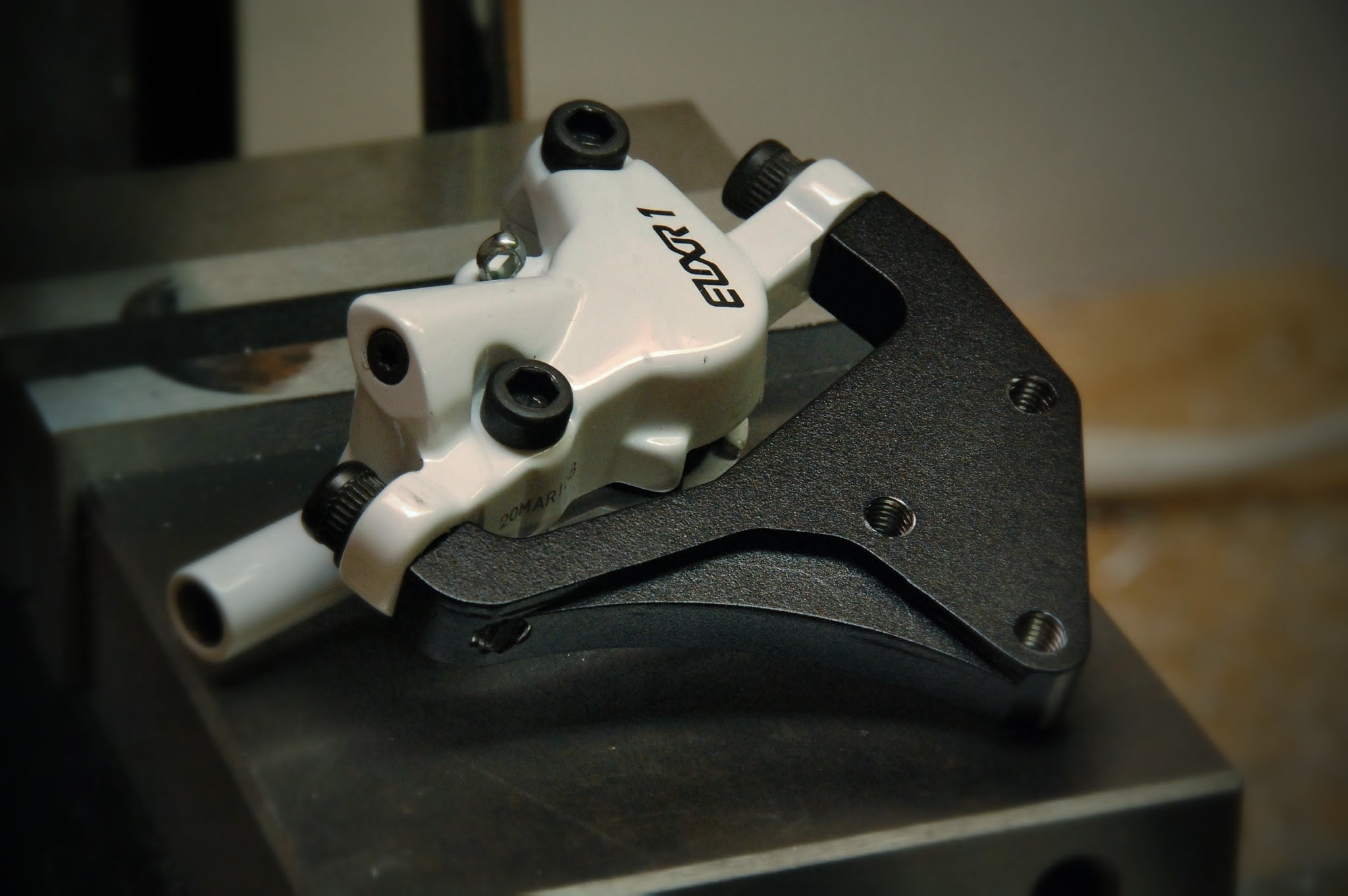[singlepic id=200 w=320] [singlepic id=205 w=320]
The cramped cockpit and limited cargo options of my Kawasaki Ninja EX500 weren’t going to suit my long-term desires for a motorcycle, and I had long been bitten a bit by the adventure touring bug after watching the Long Way Round/Long Way Down series a few years ago. Having champagne tastes and more of a reputable microbrew budget, I decided to try to find myself a relatively new low-mileage Suzuki V-Strom. After a couple of weeks of scouring Craigslist, I turned up a nice looking bike in Vermont, and the rest, as they say, is history.
Reeling a bit from the purchase in these tighter economic times, I was not really in a position to go out and plunk down big bucks for the highly regarded Touratech Zega setup, as featured on Ewan and Charley’s bikes in both Long Way series. I needed a more economical approach that would result in a functional and high quality luggage solution, and look acceptably nice on the bike. Some DIY was not a problem, and in fact welcome.
I figured my best bet for getting the project done in a reasonable time frame was to start with some off-the-shelf available side racks for the bike. Sure, I could learn to weld (and in fact, have equipment on loan from my friend Dave to start that process), but there was no way I would be able to produce a nice set of racks in a couple of weeks, which is a deadline based around a trip that I’ve been invited to join.
So, after looking at the options for side racks for the V-Strom, it seemed the least expensive bet was the Givi tubular side racks. The runner up was the common SW Motech side racks with quick-removal system, but they are more costly and less secure (without modifying them to be more permanent anyway). Other options were available, but most were specific to particular brands of side cases.
With the side racks decided, choosing cases was next. Pelican cases are a popular choice for DIYers – they’re waterproof, warranted for life, durable as heck, and have their own sort of industrial/military charm to them that carries a certain robust function-over-form look. In fact, a company called Caribou Cases makes a commercially available case system out of Pelican cases, and adds some nice features like case locks and quick release brackets. Twisted Throttle also offers their own spin on the idea with their Storm case system. Many people have done DIY systems, either mounting them to the side racks semi-permanently (not ideal in my opinion), using some off-the-shelf “pucks” which allow the case to be released from the rack only by opening the case first, or building somewhat crude DIY quick release systems.
After what seemed like days of deliberation, I finally decided on the Pelican 1550 cases, providing around 34 liters of storage each. I planned to design and fabricate my own elegant locking quick release system that would mate to the Givi side racks. In the short term I plan to use padlocks to lock them shut, but long term the goal is to add my own case lock mechanisms to the cases, a la Caribou.
After spending an evening sketching out ideas, and another evening finishing up some preliminary CAD drawings, I have the first part of the design modeled. The idea is to create a mate to the two protruding pegs that are located on the bottom of the Givi racks. Externally, each mating puck will consist of a durable plastic component (shown in green in the CAD) with a machined channel that captures the peg on the Givi rack. It will be backed up by an aluminum disc with a counterbored hole to give the plastic component more strength to dissuade it from splaying at the open end. The whole puck assembly will bolt through the back side of Pelican cases, with the plastic part facing outward. Inside of the Pelican case, the bolts will be backed up either with fender washers or a similarly shaped metal disc with the matching three holes. I am undecided on whether I feel threading into the plastic peg receiver will be sufficiently strong or if I will need to countersink the bolts and keep the heads on the outside of the case, with the nuts inside.
This handles the concept for the two bottom points of each case, with two of these peg receiver assemblies to be installed in appropriate places on the case. The trickier part is a durable locking mechanism. I have some ideas sketched on paper that I believe will work, but I need more design time before I can present them. I am fairly certain I will be removing the latch component from the Givi racks (the protruding triangular bit on the top rung of the rack) and designing my own component to replace it.
[nggallery id=23]


I have never seen such British determination and enthusiam for fitting top boxes result in state of the art CAD drawings. Usually modifications of this type would take place in a damp dwelling surrounded by the remenants of other long lost bike projects. Pictures of the process would be poorly lit and badly illustrated with only the nicotene stained walls in focus. A truly epic adaptation of motorcycle luggage.
Your project is amazing!
It is simple and functional.
Looking for a way to mount boxes peli 1440 to my bmw r1100gs.
I also have givi frame and I think that your project fits perfectly for my needs.
Could you share CAD files for this project?
I really like your plans on this design of the pelican bags to the givi racks, would you be interested in making another set for sale as I would be interested to buy it if you did.